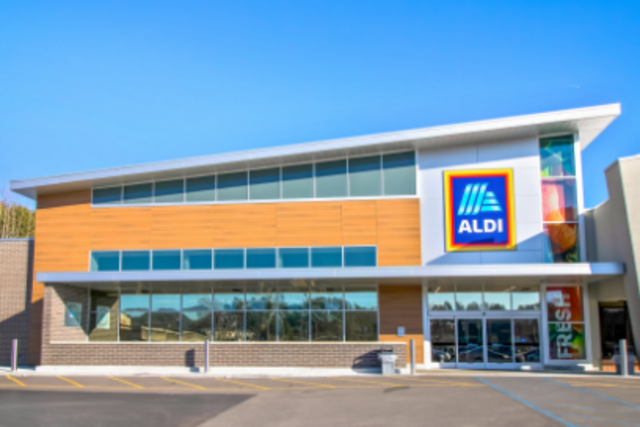Q&A with EquityMultiple CEO Charles Clinton on their Opportunity Zone investment program
Opportunity Zone investments offer substantial tax benefits while ostensibly helping to spur development where it's most needed. EquityMultiple CEO Charles Clinton talks about their approach to the program

2017’s tax law changes greatly expanded so-called “Opportunity Zones” which offer generous tax incentives to spur development: capital gains tax from the sale of just about any other asset can be deferred if reinvested in a qualifying opportunity zone, and waived entirely if that investment is held for 10 years. And it seems to be working – sales of development sites increased by 80% in the first part of 2018, soon after the changes went into effect. Commercial real estate investment platform EquityMultiple (read our full review here) has recently launched a new program offering investments specifically targeting Opportunity Zone sites. CEO Charles Clinton answered our questions about the program by email, including more about EquityMultiple’s selection criteria.
YieldTalk: What kind of investments are you offering for Opportunity Zones?
EquityMultiple CEO Charles Clinton: We were intrigued with the Opportunity Zone program as soon as it was signed into law, but we wanted to wait until the Treasury Department delivered sufficient clarity, such that we could confidently present Opportunity Zone investments that offer the substantial tax incentives, [but] our guiding principle in sourcing potential Opportunity Zone investments has been to seek real estate deals that would have been attractive regardless of the tax incentives, with the new Opportunity Zone tax benefits as an added bonus.
Our first Opportunity Zone investment was for the ground-up development of an industrial complex in Goodyear, Arizona - part of the Phoenix Metro Area. We were drawn to the robust demand for industrial space in the area, fueled in part by sustained growth in e-commerce fulfillment activity. In total, we evaluated over 200 potential Opportunity Zone investments before selecting this as our first.

We will continue to pursue single-asset Opportunity Zone investments, as well as diversified Opportunity Zone funds where we have strong conviction in the Sponsor and business plan.
YieldTalk: A criticism of Opportunity Zones is that they just funnel money toward projects that would already get funding, what’s your perspective on that?
Clinton: Frankly I do think it’s fair to wonder whether certain census tracts really need any help drawing capital given existing development activity in the area. This doesn’t mean that the program overall won’t have substantial positive impact across the country. There are over 8,700 qualified Opportunity Zones across the U.S. While some of them – like The Pearl District in Portland, OR. - have already seen dramatic redevelopment, many others have been largely passed over by capital, including many suburban and exurban areas. In the early days of this program, it’s natural for investors to focus on the areas already exhibiting growth - we are doing so ourselves – because the risk vs potential return makes most sense in those areas. Over time – and we hope this program gets extended – the market will rebalance and the relative value (and potential return) of areas that won’t initially attract investment will begin to make more sense.
No matter how you slice it, the U.S. is in the midst of a severe affordable housing shortage. Home prices are now rising faster than wages in 86 percent of local markets, and new construction of affordable housing stock simply hasn’t kept up with demand. Our hope is that the program will spur additional development of a breadth of affordable housing - including alternative scaled housing models like manufactured housing communities (MHCs), density micro-units in transit-rich infill areas, and co-living in desirable urban cores.
A key provision of the program is that investments must be held for 10+ years in order to reap the bulk of the tax incentives. Only ground-up development and major renovation projects are eligible for the tax incentives. In other words, investors in Opportunity Zones are in it for the long haul, and must add substantial value. This should mitigate the risk of exploitation of the program by overly opportunistic, short-sighted investors.
YieldTalk: What should investors know about Opportunity Zone investments compared with other kinds of offerings EquityMultiple has done in the past?
Clinton: The most obvious difference between Opportunity Zone investments and our typical investment is the duration. Our typical hold period targets are 1-3 years for debt or preferred equity investments and 2-5 years for common equity investments. Opportunity Zone investments by definition must be held for 10 years or more in order to reap the substantial tax benefits afforded under the program. This may not align with the goals of all investors. But, for those with substantial capital gains, these investments offer unprecedented potential tax benefits for those willing to make long term investments in real estate.
I would encourage our investors to take some time getting to know the mechanisms of tax deferral, reduction and elimination under the program – which we do our best to make digestible on our Opportunity Zones Resource Page – and consult with their tax advisor to best understand whether they can and should manufacture capital gains that can be rolled over into a qualified Opportunity Zone investment.
EquityMultiple
Curated Opportunity Zone investments that may qualify for significant tax advantages
Open an AccountYieldTalk: There’s a lot of Opportunity Zone investing happening right now (according to the Economist, 12% of US census tracts qualify, covering the places where 35M Americans live). What sets EquityMultiple’s opportunity zone investments apart from what investors could find elsewhere?
Clinton: Again, EquityMultiple practices the same rigor in sourcing and underwriting Opportunity Zone investments as we have in our core business since inception. Our value is in bringing institutional-quality commercial real estate investments to accredited individuals, and this practice now extends to Opportunity Zone investments. If anything, good due diligence is even more important for these investments, as many of the eligible census tracts are areas where there historically has not been substantial development and investment activity. As with all our deals, EquityMultiple will also stay involved in these investments until they are sold - investors can rely on us to work with the Sponsors, provide reporting, make distributions and provide visibility into their investment through our online platform.
On the deal-sourcing side, owing to our nationwide network of sponsors, we are able to source and present investments across a broad spectrum of markets and property types and distill a big pipeline of potential investments into the small curated set that we offer to investors. While our focus is on those census tracks that are already exhibiting growth, that does not mean we’re only looking at Opportunity Zones like Downtown Brooklyn. Our first Opportunity Zone investment, outside of Phoenix in Goodyear, AZ, is an area that most investors would not be familiar with unless they are particularly keyed in on the industrial market out West.
Generally speaking, our Opportunity Zone investments will be more accessible to accredited individuals than what is being offered elsewhere: our minimum investment is lower - it was $50k for our first Opportunity Zone investment. Many of the Opportunity Funds that have emerged so far are only open to qualified purchasers (those with over $5 million in investable net worth) and oftentimes we are able to aggregate investors to meet those higher minimums. While we found on our first investment that many investors were interested in investing substantially more than that $50k minimum, our goal is always to help provide optionality for investors seeking diversification.
YieldTalk: What is your selection criteria for the investments?
Clinton: Much of our process in sourcing and vetting Opportunity Zone investments is fundamentally the same as what we practice in our core business: we evaluate the market, specific location, and sponsor; and examine the pro forma and modeling assumptions at a granular level. We review and, in many cases, negotiate legal documents on behalf of investors and examine the Opportunity Zone program qualifications.
The big differences are that the term must be 10 years or more and there will be substantial construction or renovation involved. This combination makes us place additional value on certain aspects of the project underwriting. To give a few examples - the Sponsor’s experience is even more essential; we prefer relatively simple construction, which is part of what appealed to us about an industrial project; and are drawn to property types and locations where long-term demand seems clear - we are very confident, for instance, in the long-term demand for housing vs retail.
YieldTalk: What kind of return are you looking for from the Opportunity Zone investments?
Clinton: Though our return objectives are always informed by the specific risk factors in any prospective investment, we are generally targeting 7%+ stabilized cash-on-cash return, at least a 2x equity multiple, and a low-to-mid teens net IRR for our investors. These return metrics do not include the value of tax benefits, which can produce a meaningfully higher tax-equivalent return. There is more information on this tax differential analysis on our Opportunity Zones Resource Page as well.
Want to learn more but aren’t sure where to start? You can explore 168 crowdfunding investment platforms in our database and learn more about the nuts and bolts of crowdfunding and alternative investing on our blog. Did you know you can use a self-directed retirement account to invest in many alternative investments? Rocket Dollar makes it easy, and when you sign up using that link you'll be helping to support YieldTalk.
Share this post:



